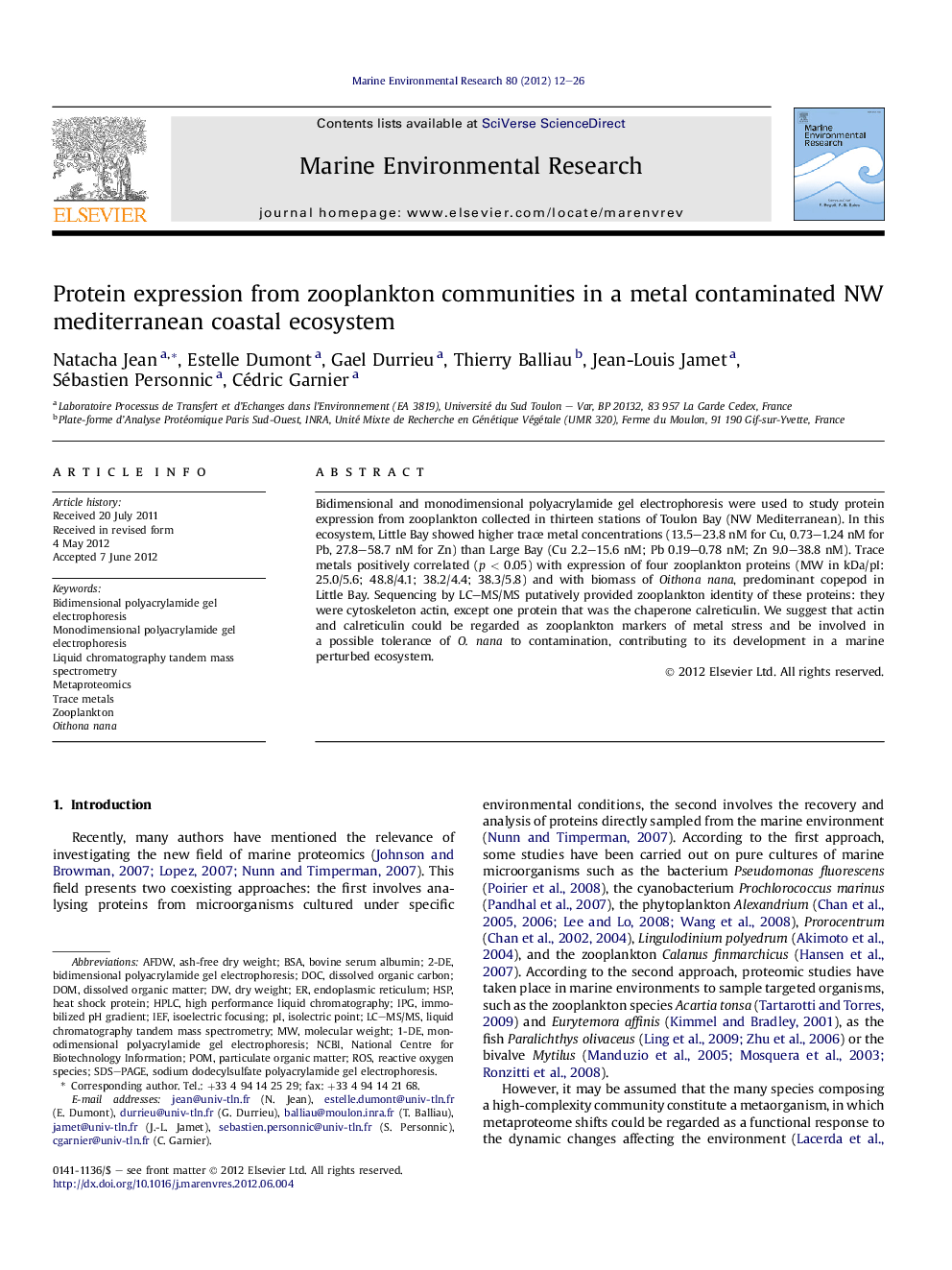| Article ID | Journal | Published Year | Pages | File Type |
|---|---|---|---|---|
| 4550924 | Marine Environmental Research | 2012 | 15 Pages |
Bidimensional and monodimensional polyacrylamide gel electrophoresis were used to study protein expression from zooplankton collected in thirteen stations of Toulon Bay (NW Mediterranean). In this ecosystem, Little Bay showed higher trace metal concentrations (13.5–23.8 nM for Cu, 0.73–1.24 nM for Pb, 27.8–58.7 nM for Zn) than Large Bay (Cu 2.2–15.6 nM; Pb 0.19–0.78 nM; Zn 9.0–38.8 nM). Trace metals positively correlated (p < 0.05) with expression of four zooplankton proteins (MW in kDa/pI: 25.0/5.6; 48.8/4.1; 38.2/4.4; 38.3/5.8) and with biomass of Oithona nana, predominant copepod in Little Bay. Sequencing by LC–MS/MS putatively provided zooplankton identity of these proteins: they were cytoskeleton actin, except one protein that was the chaperone calreticulin. We suggest that actin and calreticulin could be regarded as zooplankton markers of metal stress and be involved in a possible tolerance of O. nana to contamination, contributing to its development in a marine perturbed ecosystem.
► 1-DE and 2-DE characterized zooplankton proteins sampled from thirteen stations in Toulon Bay (NW Mediterranean coast). ► Toulon Bay was differently contaminated by the trace metals Cd, Cu, Pb, Zn. Little Bay was the most metal contaminated. ► In Little Bay, Copepods were mainly composed of O. nana whose biomass showed positive correlations with metals. ► Four zooplankton proteins, among which actin and calreticulin have been identified, positively correlated with metals. ► Actin and calreticulin could be regarded as zooplankton markers of metal stress.
